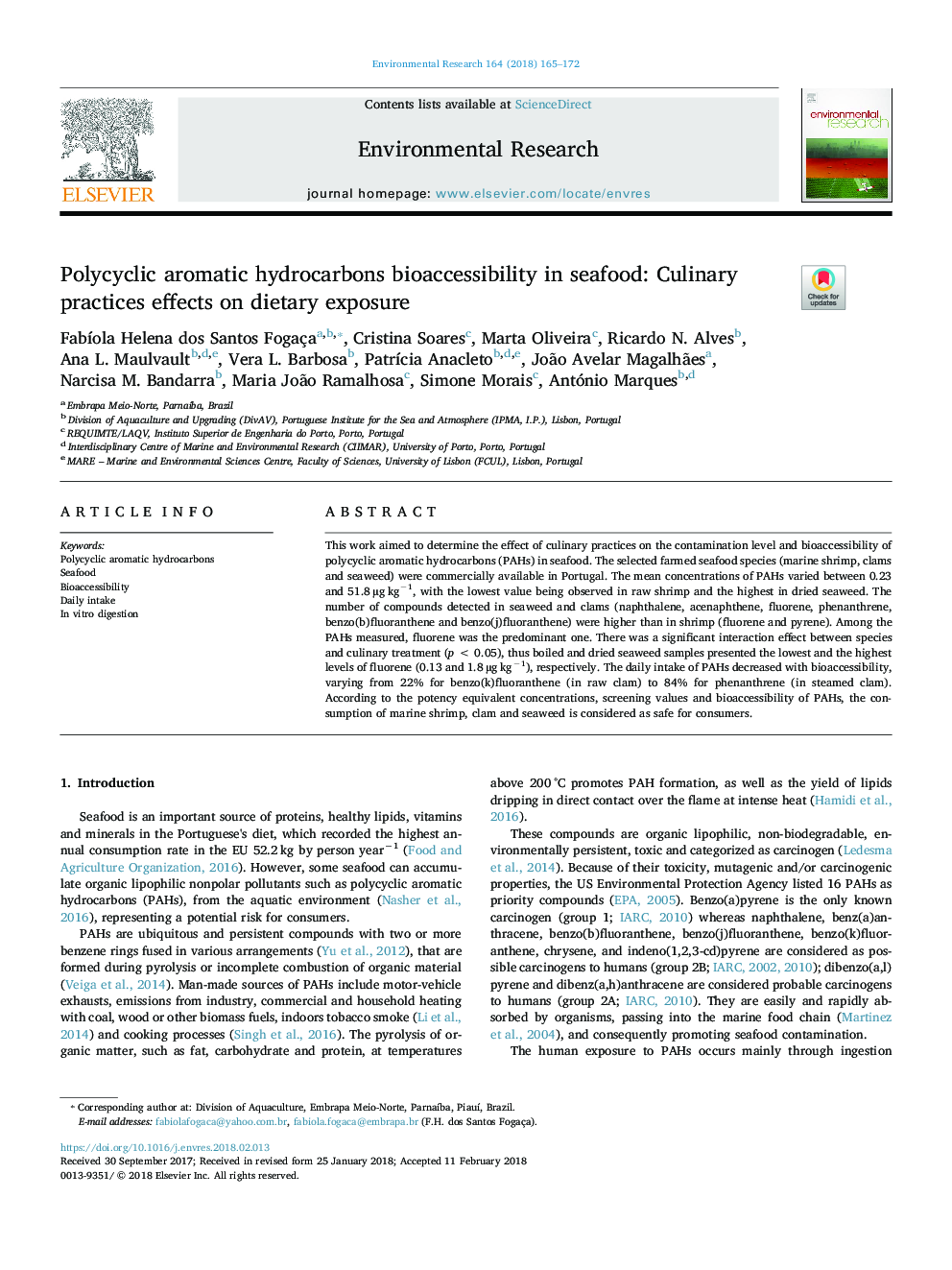| کد مقاله | کد نشریه | سال انتشار | مقاله انگلیسی | نسخه تمام متن |
|---|---|---|---|---|
| 8869095 | 1622539 | 2018 | 8 صفحه PDF | دانلود رایگان |
عنوان انگلیسی مقاله ISI
Polycyclic aromatic hydrocarbons bioaccessibility in seafood: Culinary practices effects on dietary exposure
ترجمه فارسی عنوان
آبیاری چند حلقه ای آروماتیک در دسترس در غذاهای دریایی: اثرات شیوه های آشپزی بر قرار گرفتن در معرض رژیم غذایی
دانلود مقاله + سفارش ترجمه
دانلود مقاله ISI انگلیسی
رایگان برای ایرانیان
کلمات کلیدی
موضوعات مرتبط
علوم زیستی و بیوفناوری
علوم محیط زیست
بهداشت، سم شناسی و جهش زایی
چکیده انگلیسی
This work aimed to determine the effect of culinary practices on the contamination level and bioaccessibility of polycyclic aromatic hydrocarbons (PAHs) in seafood. The selected farmed seafood species (marine shrimp, clams and seaweed) were commercially available in Portugal. The mean concentrations of PAHs varied between 0.23 and 51.8â¯Âµgâ¯kgâ1, with the lowest value being observed in raw shrimp and the highest in dried seaweed. The number of compounds detected in seaweed and clams (naphthalene, acenaphthene, fluorene, phenanthrene, benzo(b)fluoranthene and benzo(j)fluoranthene) were higher than in shrimp (fluorene and pyrene). Among the PAHs measured, fluorene was the predominant one. There was a significant interaction effect between species and culinary treatment (pâ¯<â¯0.05), thus boiled and dried seaweed samples presented the lowest and the highest levels of fluorene (0.13 and 1.8â¯Âµgâ¯kgâ1), respectively. The daily intake of PAHs decreased with bioaccessibility, varying from 22% for benzo(k)fluoranthene (in raw clam) to 84% for phenanthrene (in steamed clam). According to the potency equivalent concentrations, screening values and bioaccessibility of PAHs, the consumption of marine shrimp, clam and seaweed is considered as safe for consumers.
ناشر
Database: Elsevier - ScienceDirect (ساینس دایرکت)
Journal: Environmental Research - Volume 164, July 2018, Pages 165-172
Journal: Environmental Research - Volume 164, July 2018, Pages 165-172
نویسندگان
FabÃola Helena dos Santos Fogaça, Cristina Soares, Marta Oliveira, Ricardo N. Alves, Ana L. Maulvault, Vera L. Barbosa, PatrÃcia Anacleto, João Avelar Magalhães, Narcisa M. Bandarra, Maria João Ramalhosa, Simone Morais, António Marques,
